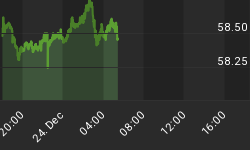This morning, US existing home sales plunged and the Chicago Fed's national activity index turned negative. Both are obvious signs of a slowing economy.
Anticipating this kind of news, Credit Bubble Bulletin's Doug Noland in his most recent column analyzed the Federal Reserve's quarterly Z.1 Report for signs of changing financial trends, and found something potentially serious. The following three charts tell the tale:
First, corporate borrowing slowed dramatically in 2015's fourth quarter...

...while households scaled back their mortgage borrowing:

And guess who stepped in to save the credit bubble? That's right. Federal government borrowing soared:

Writes Noland: "This more than offset the private-sector slowdown, ensuring that overall Non-Financial Debt growth accelerated to an 8.6% pace in Q4."
In other words, monetary policy (QE and low/negative interest rates) has stopped working and now we're reverting to deficit spending to juice the economy. If this is the beginning of a trend, expect to see a torrent of announcements in coming months touting new government programs on infrastructure, health care and/or the military.
It's as if the people making these decisions have forgotten that 1) the world borrowed $57 trillion post-2008 and got next to nothing for it and 2) the new debt will have to be rolled over at higher rates if interest rates are ever to be normalized, thus decimating government finances. For more on the implications of this latest iteration of the Money Bubble, see Is This The Debt Jubilee?















